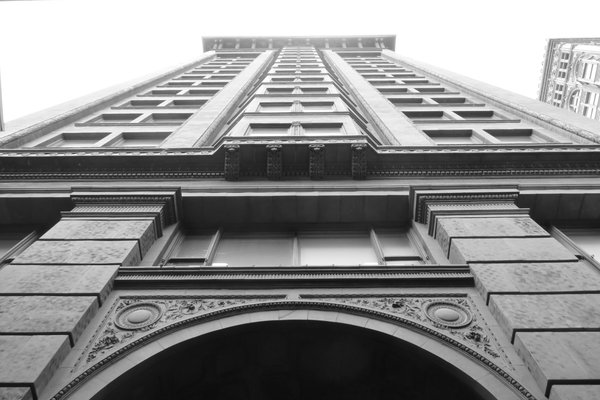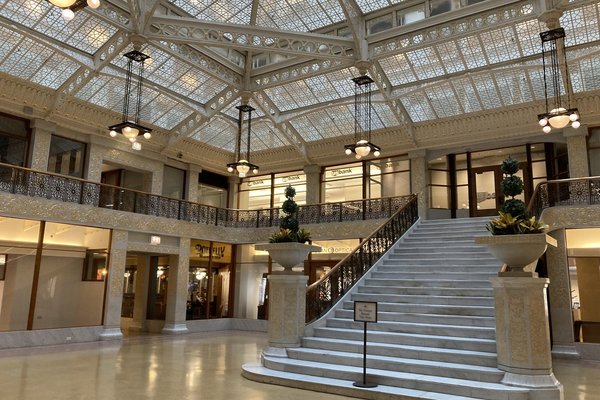United States of America
Early Chicago Skyscrapers
The Early Chicago Skyscrapers are a collection of some of the earliest modern skyscrapers in the world, constructed in the late 19th and early 20th centuries.
A number of architects, including Louis Sullivan and John Wellborn Root, were commissioned to rebuild central Chicago after the Great Fire of 1871, and they utilized new techniques and a style that became known as the Chicago School of Architecture. Their skyscrapers pioneered innovations in foundations, iron and steel structural framing, large plate-glass windows, elevators, and electric lights, which allowed for the safe and practical construction of taller buildings, and presaged the growth of vertical downtowns in the 20th century.
Site Info
Official Information
- Full Name
- Early Chicago Skyscrapers (ID: 6235)
- Country
- United States of America
- Status
-
On tentative list 2017
Site history
History of Early Chicago Skyscrapers
- 2017: Added to Tentative List
- Added to tentative list
- Type
- Cultural
- Criteria
Links
- UNESCO
- whc.unesco.org
All Links
UNESCO.org
- whc.unesco.org — whc.unesco.org
Community Information
- Community Category
- Human activity: Urban planning
Travel Information
Recent Connections
News
No news.
Recent Visitors
Visitors of Early Chicago Skyscrapers
- Alexander Lehmann
- Alex Baranda
- Alvaro1404
- Ana
- Anne
- Artsybrea
- AYB
- BaziFettehenne
- BeyondMonkey
- Bin
- Bluewonder310
- Can SARICA
- Christravelblog
- Cobaltrage
- Coppi
- ctravel
- Dani Cyr
- Daniel Chazad
- David Aaronson
- delacec
- Delphine Delaunay
- Dennis Nicklaus
- Dimitar Krastev
- DouglasR
- edstar500
- Els Slots
- Eric Lurio
- Erik G
- Erik Jelinek
- Frédéric M
- George Gdanski
- Gilles
- giulio25
- Grendel Gongan
- Hadrianus
- Hammeel
- HaraldOest
- Highlander
- Hughes1920
- Ian Cade
- Ilya Burlak
- Ingrid
- Jacob Choi
- Jan Zimmermann
- Jason Boulette
- Jasonfd247
- Javier Coro
- Jawnbeary
- Jay T
- Jeffrey Chai
- J_neveryes
- Jon Opol
- Kim, Soo-youn
- KngAlaric
- Kurt Lauer
- Kyle Magnuson
- lichia
- Lithobates
- Lucas Del Puppo
- Ludvan
- Matthewsharris
- Michael Ayers
- MichaelH
- Mihai Dascalu
- MMM
- MoPython
- Mstrebl1990
- Nafis N
- Nick Kuzmyak
- Nolan B.
- PabloNorte
- palka25
- peacemaker2142
- Philipp Peterer
- Pink Bunny
- Piotr Wasil
- pressdm
- Priyaranjan Mohapatra
- Rachel Perkins
- Reiseblitz
- Riccardo Quaranta
- Roel Sterken
- Roger Ourset
- Roman Bruehwiler
- Roman Raab
- Sandra!
- sbshipway
- Sclowitz
- shoaibmnagi
- Shombob
- Solivagant
- Ssong.x
- Stan
- SymonMajewski
- Tamara Ratz
- Ted Coombs
- TheDarlingLife
- Thomas Buechler
- Thomas van der Walt
- Timothy C Easton
- tingmelvin
- triath
- Tsunami
- Van Hung
- Velvetlapis
- voyager
- WILLIAM RICH
- Wimmy
- Xiquinho Silva
- Zach
- Zhenjun Liu
- Zoe
Community Reviews
Show full reviews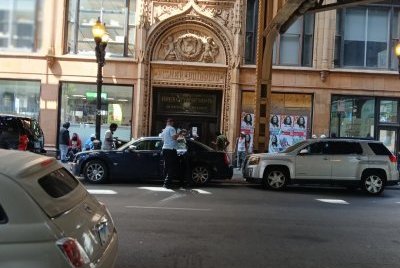
I'm not too sure about this one. They're mostly nondescript office buildings (okay, one has apartments) which I checked out after the Democratic convention. There are three of them right next to the Harold Washington Library at the south end of the fabled loop.
I can understand why much of the architecture of Chicago would be considered WHS-worthy, but aside from the age, there's not any reason for these buildings over any of the others there. The city has so much great architecture that the choice is a mystery. Also, all of these are private and the owners want to demolish them and build the best of what architects have to offer.
Worth the visit if you are there on other business.
Keep reading 0 comments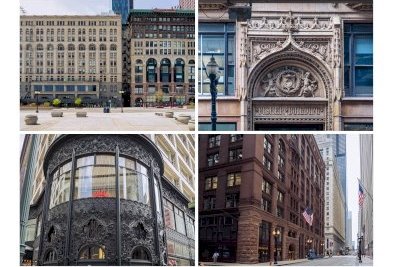
In May of 2022, I took an hour-plus out of my business-trip itinerary in Chicago to visit the buildings in this serial property. In a notable fail of the expedition, I did not read Kyle's review below prior to the walk. I assumed that all of these buildings allowed some form of easy public access to explore the interiors - and would actually have something to offer in that respect. But only a few of them do. And because I was moving northward from the southernmost of the buildings, the first five that I stopped by did not exhibit anything of value in their interiors (or could not really be entered). So, I mostly gave up and did not even attempt to enter Marquette or Rookery, which Kyle marked as the most impressive. I did step into Monadnock - only mildly interesting, certainly not anything exceptional.
From the exterior, Rookery, Fisher, and Sullivan Center (aka Schlesinger & Mayer Building, aka Carson, Pirie, Scott and Company Store) exhibit the most outstanding features. Conversely, if you stand far enough from the Auditorium Building on Congress Plaza to take in its façade together with the neighboring Fine Arts Building, you may find yourself justifiably perplexed why the former - and not the richer-in-features latter - is part of the inscription (the answer likely lies in the Auditorium Theater being part of the eponymous building - but as Kyle noted, you can only see it if you attend a performance there).
I …
Keep reading 0 comments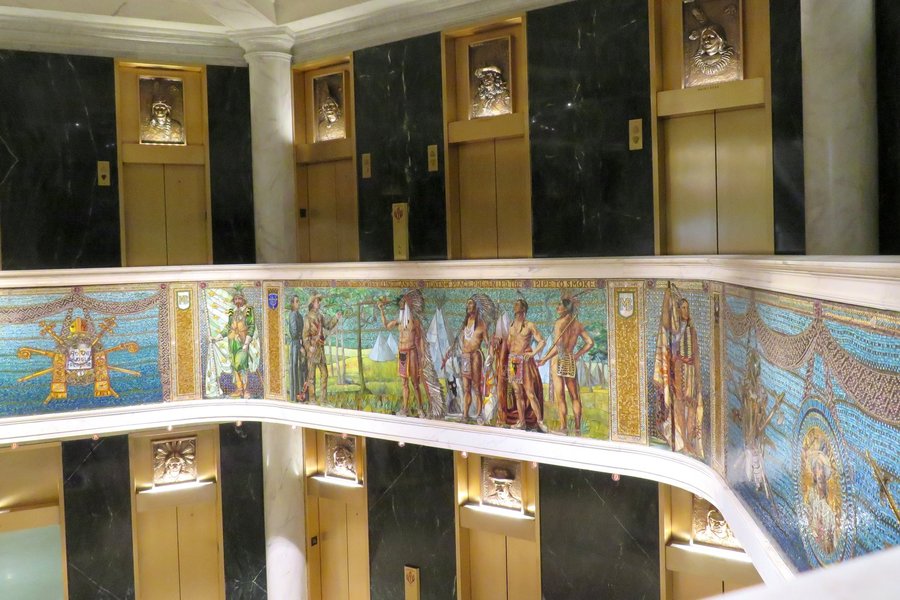
All nine sites of this serial nomination can be covered in a 30 minute walk, in fact several of these iconic early skyscrapers are adjacent to each other. I visited each without too much difficulty, however there are different levels of satisfaction. For example, some structures have little value remaining within as the interior has either been changed, significantly altered, or completed gutted. For visitors, there are 2 wonders included in this nomination that perhaps justify inscription together, regardless of the other sites.
1) Rookery Building (1888)
This structure is the gem of the ensemble and is note-worthy for both its exterior and magnificent interior lobby. The later was redesigned by a rising star at the time, Frank Lloyd Wright, who in 1905 was in his late 30's. The interior really is stunning. In addition, there is a Frank Lloyd Trust office and store in the lobby with handy FLW architecture maps of the Chicago Metropolitan area.
2) Marquette Building (1895)
This is a must-see component of the Early Chicago Skyscrapers nomination. The front entrance is adorned with scenes of Chicago History. The History of Chicago and the Great Lakes region are even more richly adorned in the lobby, which is open to the public. The mosaics were created by Louis Comfort Tiffany (yes, that Tiffany). Visitors are rewarded after exiting the lobby going straight past the National Historic Landmark sign to an informative display about the Chicago School or Architecture. Interesting panels about the History of the …
Keep reading 0 comments
